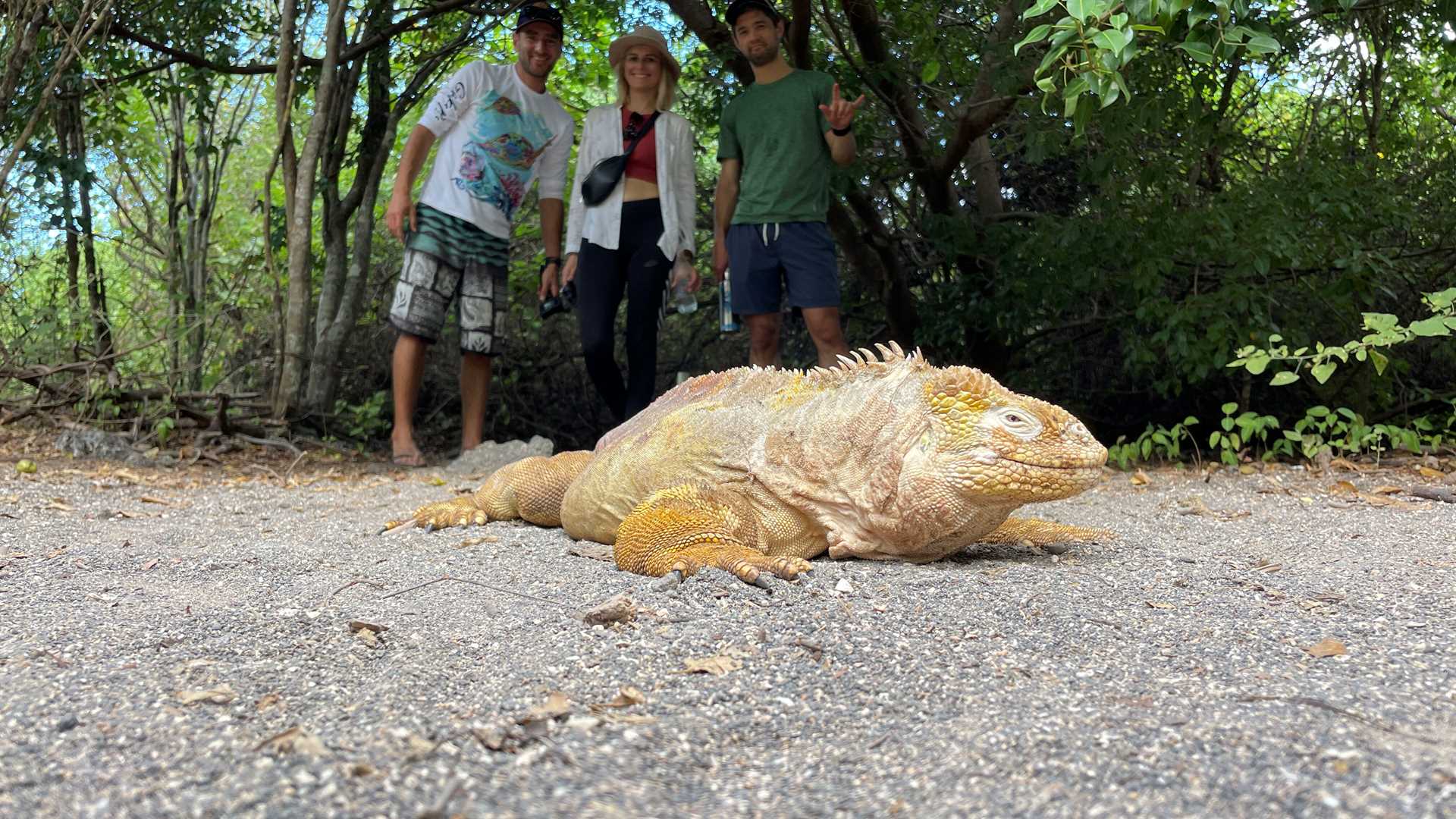Isabela Island is the largest in the Galapagos archipelago, and its wildlife is abundant. Today we explored Urbina Bay, one of the best examples of the phenomenon known as land uplift. The site we explored this morning was once part of the sea floor until 1954 when a massive land uplift occurred suddenly. This process left giant coral heads exposed on land and we found evidence of this all over the place today. At this site, wild giant tortoises are often found along with another iconic reptile, the yellow land iguana. As we walked farther into the vegetation, we had the opportunity to photograph these reptiles up close. Nearby, we also found further evidence of the uplift: corals and shells far inland. Reptiles are not the only animals seen in this place — we also observed different species of Darwin’s finches, warblers and flycatchers looking for seeds and insects.
When we finished our walk, the beach and its warm waters were awaiting us! We swam and relaxed alongside the sea turtles that are abundant in the area. Our younger explorers had the chance to learn how to drive a Zodiac landing craft, one of the most popular activities for the Global Explorers. We had so much fun!
The afternoon included different water activities such as kayaking, paddleboarding and snorkeling. We were able to explore this unique place and enjoy its breathtaking landscape and wildlife.
We still had some hours of sunlight, so we took our guests on an invigorating hike to Darwin Lake, a saltwater lake that was formed recently in geological time. The view was amazing and it afforded a good opportunity for some extra exercise. We came back down to a magnificent sunset before returning to our floating home, National Geographic Endeavour II.







